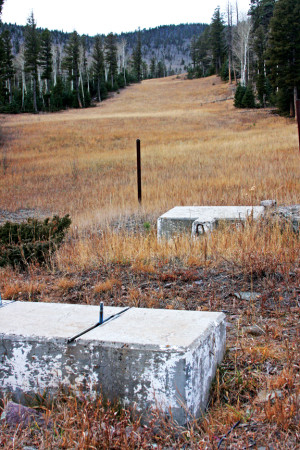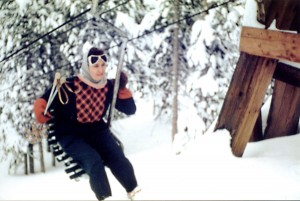By John Orr
First Congreso de Acequias
The oldest water right appropriation date in Colorado (April 10, 1852) belongs to the San Luis People’s Ditch on Culebra Creek on the western slopes of the Sangre de Cristo Mountains in the San Luis Valley. The ditch is a historical artifact from the colonial days of the Spanish Empire.
Gravity-fed irrigation systems were introduced to Spain by the Moors during their occupation of the Iberian Peninsula. Spain’s colonialists brought the technology and concepts of Acequia culture with them as they set up shop in the western hemisphere. Acequias were established in northern New Mexico and southern Colorado as the Spanish, and then Mexicans, settled the Rio Grande Valley.
Acequia administration differs from Colorado water law in that water in the system and the ditches and laterals as well is treated as a shared resource, with the community sharing water equally in wet and dry years. Irrigation rights holders also participate in annual maintenance – limpieza y saca de acequia – according to Wikipedia. Acequia governance is a form of water democracy with a “one farmer, one vote,” system.
During the 2009 legislative session, freshman State Representative Ed Vigil was able to get HB09-1233 (Recognize Acequias) through the legislature and signed by Governor Ritter. According to the Valley Courier, the bill “promotes and encourages the continued operation of acequias,” and also “promotes the viability of the historic communities that depend on this system as a means of irrigation and cultural preservation.” HB09-1233 allowed the acequias to form ditch companies recognized by Colorado water law.
At the time, Representative Vigil told the legislature, “The Hispanic culture has a communal way of doing business … This is the way the water was managed – not by ownership, not as a commodity, but rather a shared ownership to the water. This (his bill) is to preserve that land, to preserve that water, and to preserve these people’s continued way of life.”
Back in October, Vigil was on hand at Emma’s Hacienda in San Luis to kick off the first Congreso de Acequias. The event, targeted at acequia communities, was the first time in Colorado history that acequia irrigators gathered to educate and share ideas on resource protection. It was modeled after actions that the New Mexico Acequia Association has taken the past few years, according to the Valley Courier.
The Congreso, in particular, focused on “what the law means to an individual ditch and irrigator, and actions that acequias must take in order to be recognized under the new law,” according to the Valley Courier.
Also in October and September, Metropolitan State University of Denver (MSU) students, faculty and administrators visited the San Luis Valley to study acequias.
According to an MSU press release, “The team made three trips to the Valley in September and in this month to interview farmers about acequias, community-operated irrigation ditches introduced by settlers from colonial Mexico. Acequias not only deliver water but are part of the cultural, civic, economic and historical heritage of communities in southern Colorado and northern New Mexico.”
The Snowpack News is all Bad
As we head to press, Monarch Ski Area has announced that they are delaying their opening due to the lack of snow this year. Monarch marketing manager Greg Ralph told The Pueblo Chieftain, “At this time, Monarch’s opening day will be announced as soon as we have sufficient conditions to do so.”
On Friday, Nov. 16, the snowpack picture for Central Colorado measured: Arkansas Basin – 43% of average; Rio Grande – 62%; Gunnison – 58%; and South Platte – 63%.
Forecasters are still calling for equal chances for above or below average precipitation for Colorado over the winter, along with above average temperatures.
National Ski Areas Association Litigates U. S. Forest Service Water Rights Clause
In late November, “U.S. District Judge William Martinez entertained oral arguments from both sides in a case that could decide the fate of hundreds of millions of dollars worth of ski-area water rights,” according to The Denver Post.
The U.S. Forest Service (USFS) says it changed the permit requirements to prevent ski areas from selling water rights connected to federal land. The National Ski Area Association (NSAA) claims that the USFS forced changes to permit requirements without complying with the Federal Administrative Procedural Act, which would have called for soliciting public input on the new rule. The USFS claims that the rule just codifies current practices.
“The worry here is that a permittee could cease using the area for permitted purposes and move the water somewhere else,” said Department of Justice attorney Clay Samford, according to The Post.
While the USFS cannot cite instances where ski areas have sold off water rights used in operations, they are claiming that it could happen if the price is right.
During the hearing Judge Martinez asked, “Why would a ski area sell off water rights and leave itself with insufficient water to operate a ski area? … Where are the examples of ski areas severing the water rights that they themselves acquired at great effort and expense?” Further, he said, “It defies common sense that ski areas would cut their own throats by taking away their own water, yet that is the rationale identified by the Forest Service.”
NSAA attorney Zeke Williams told the court, “The agency never asked for comments from the public. It never responded to comments; it never explained the rule it actually adopted.”
The Post quoted Department of Justice attorney Clay Samford as saying, “In the history of this policy, it is very clear that we are not deviating from the overall history of the policy … If you have a federal permit on federal land and you want water rights in service of that permit, you need to claim them in the name of the United States.”
Refer back to your April 2012 copy of Colorado Central for more gory details of the lawsuit.
Short Takes
• Colorado University researchers have determined that the only known pure strain of Greenback Cutthroat trout (some 350 or so individuals) is living in the Arkansas River Basin, in Bear Creek, southwest of Colorado Springs. Work is already underway to preserve the strain and habitat.
• The Colorado Water Conservation Board is ponying up $220,000 for a project by the City of Gunnison and Colorado Parks & Wildlife designed to assess, restore and improve river channel function on the Gunnison River main stem near town.
• Governor Hickenlooper echoed the sentiments of many in October when he told the Greeley Tribune, “We’ve let the system (Water Court) run amuck.” He was commenting on the shutdown of irrigation wells in Weld County.
John Orr follows Colorado water issues at Coyote Gulch (www.coyotegulch.net) and on Twitter @CoyoteGulch.



